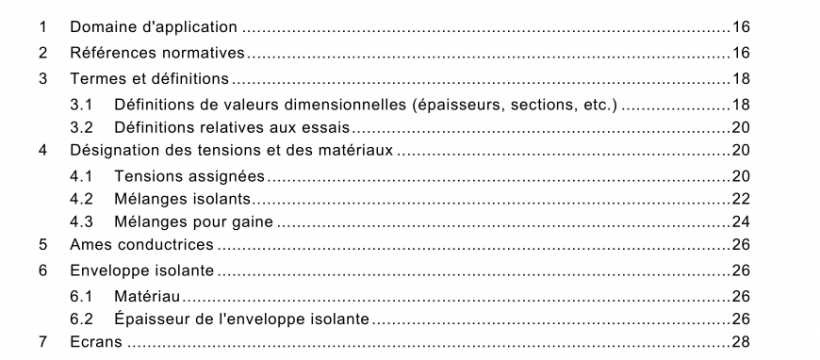IEC 60502-2:2005 pdf free download
IEC 60502-2:2005 pdf free download.Power cables with extruded insulation and their accessories for rated voltages from 1 kV (U m = 1,2 kV) up to 30 kV (U m = 36 kV)
1 9.21 .1 Procedure
The test shall be performed three times on both unaged and aged samples, using either three separate pieces of cable or one piece of cable at three positions around the circumference,spaced at approximately 1 20°.
Core lengths of at least 250 mm shall be taken from the cable to be tested, before and after being aged according to 1 9.5.3.
Two cuts shall be made in the extruded semiconducting insulation screen of each sample,longitudinally from end to end and radially down to the insulation, the cuts being (1 0 ± 1 ) m
apart and parallel to each other.
After removing approximately 50 mm length of the 1 0 mm strip by pulling it in a direction parallel to the core (i.e. a stripping angle of approximately 1 80°), the core shall be mounted vertically in a tensile machine with one end of the core held in one grip and the 1 0 mm strip in the other.
The force to separate the 1 0 mm strip from the insulation, removing a length of at least 1 00 mm, shall be measured at a stripping angle of approximately 1 80° using a pulling speed of (250 ± 50) mm/min.
The test shall be carried out at a temperature of (20 ± 5) °C.
For unaged and aged samples, the stripping force values shall be continuously recorded.
1 9.21 .2 Requirements
The force required to remove the extruded semiconducting screen from the insulation shall be not less than 4 N and not more than 45 N, before and after ageing.
The insulation surface shall not be damaged and no trace of the semiconducting screen shall remain on the insulation.
1 9.22 Water penetration test
The water penetration test shall be applied to those designs of cable where the manufacturer claims that barriers to longitudinal water penetration have been included. The test is designed to meet the requirements for buried cables and is not intended to apply to cables which are constructed for use as submarine cables.
The test is applicable to the following cable designs:
a) a barrier is included which prevents longitudinal water penetration in the region of the metallic layers;
b) a barrier is included which prevents longitudinal water penetration along the conductor.The apparatus, sampling and test procedure shall be in accordance with Annex F.
IEC 60502-2:2005 pdf free download
